




The students of Fukuoka Prefectural Nakama High School created this course in collaboration with Nakama City Sightseeing Guides. This course takes you through the north part of Nakama City. You may want to visit shrines and temples in the area, or may want to enjoy the view of the Horikawa canal which was constructed by the order of lord Kuroda. You may also want to walk leisurely as you learn the history of the area.


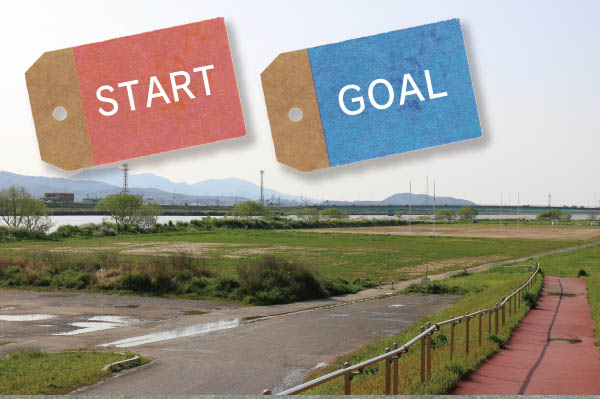
Nakatsuru ground spread across the riverbed opposite the elementary school. It is a location where you can shoot a scene of a drama. It is also the entry point for boats for bass fishing on the Onga River, and many anglers gather on weekends. Be careful of cars and let's pass by.
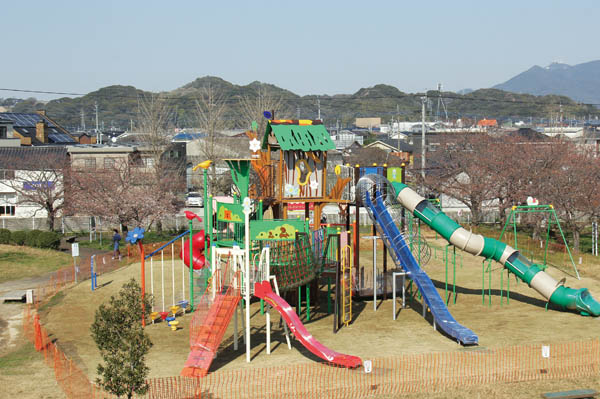
The prominent features of the park are its large-scale playground equipment comprised of a combination of slides, wooden obstacle courses, and other fixtures. With its wide open spaces, it is crowded with families on the weekends.
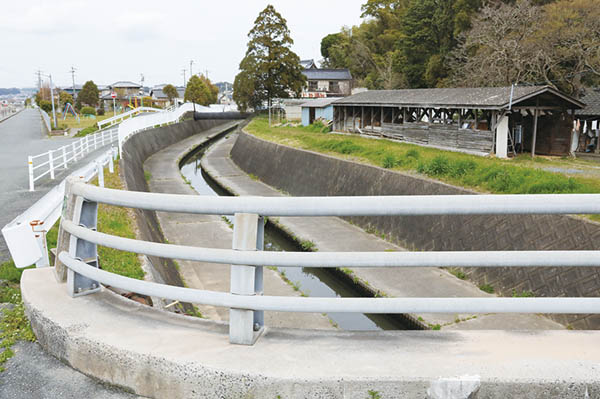
This is the spot where the Horikawa Canal, built by the order of Kuroda Nagamasa, the first feudal lord of the Kuroda domain, and Magarigawa River intersect. The Horikawa Canal used to pass over the Magarigawa River. It was closed in 1986, but even today it appears as it did back during that time.
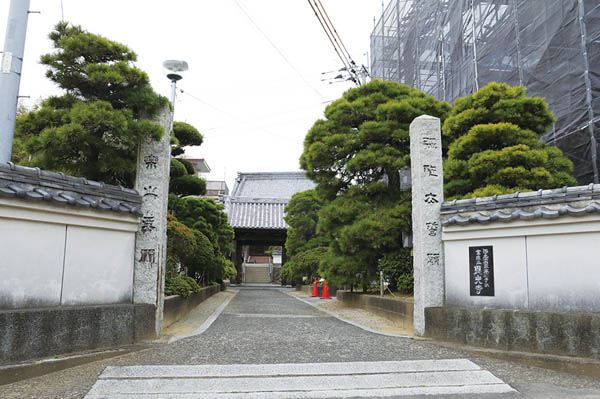
Originally, it was a Zen Buddhism temple called “Shokakuji,” but Onkoji Temple inherited all the temple supporters. After that, it underwent a religious conversion to Jodo Shinshu and the temple today carries on the religion.
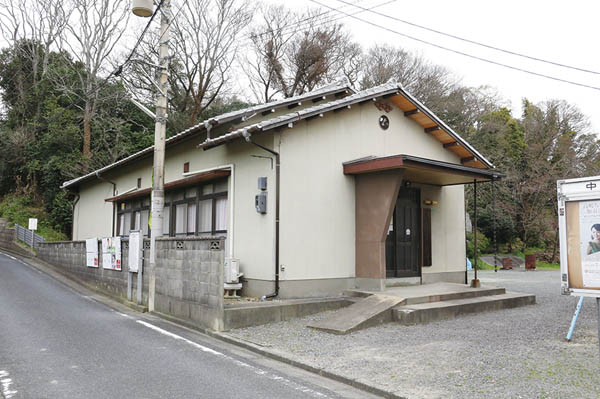
This is a community center at the foot of Suga Shrine. It is used as a place for rest and relaxation when there is an event going on.
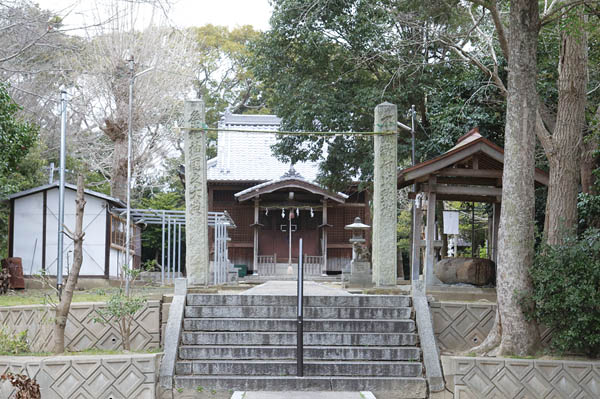
Long ago, the shrine was called “Iwase-no-Ogion-san” The old lion masks kept here used to be paraded around to each of the households praying for family safety. There are three sets of stairs leading inside the precincts.

It is said that when Botayama Mountain spontaneously combusted and rain fell, the hot springs would collect the warm water from the rain and use it in the bathwater. The building is still standing today. Botayama: Rocks and low-quality coal discarded during the process of dressing and preparing coal were called in Japanese “bota.” (In English, “spoil tip.”) The enormous pile of these “bota” was named Botayama (“Mt. Bota”).



 Kamisokoino
Kamisokoino
 Total Distance : approx. 5.4 km
Total Distance : approx. 5.4 km
Many remain areas of natural and cultural assets

 Dotenouchi
Dotenouchi
 Total Distance : approx. 4 km
Total Distance : approx. 4 km
Course to walk the World Heritage location in 2015

 Machinaka
Machinaka
 Total Distance : approx. 3.6 km
Total Distance : approx. 3.6 km
Center and train station of the city flourished as a town of coal mine ,
course to walk the mall

 Nakasokoino
Nakasokoino
 Total Distance : approx. 3.3 km
Total Distance : approx. 3.3 km
Nature remains a lot , walk to the west bank of the Onga river course

 Tenmangu Shrine
Tenmangu Shrine
 Total Distance : approx. 00 km
Total Distance : approx. 00 km
The course includes the Umeyasu Tenmangu Shrine and
Soshagu Shrine where Sugawara-no-Michizane is said to have visited.

 Nakama Toritani Course
Nakama Toritani Course
 Total Distance : approx. 4 km
Total Distance : approx. 4 km
This is a course composed by the students at the Fukuoka Prefectural Nakama High School.
It is a course with a lot of hills, but also with many picturesque spots.

 Iwase Nagatsu Course
Iwase Nagatsu Course  Total Distance : approx. 5.5 km
Total Distance : approx. 5.5 km
The students of Fukuoka Prefectural Nakama High School created this course in collaboration with Nakama City Sightseeing Guides. This course takes you through the north part of Nakama City.


